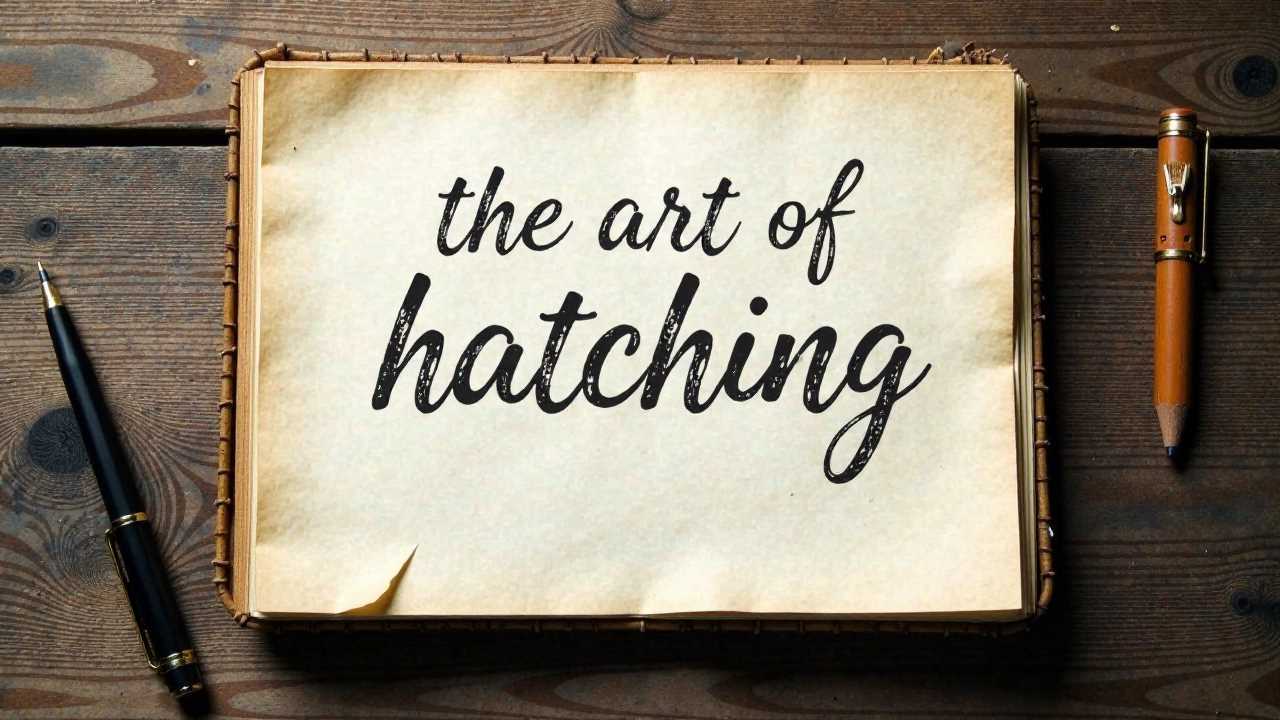
Understanding Texture Rendering in Art
Texture rendering is a fundamental aspect of art that adds depth and realism to our sketches. By mastering various techniques, artists can create intricate details that enhance the overall composition of their work. This article will explore essential techniques such as hatching, crosshatching, stippling, shading, blending, and linework. Each method contributes uniquely to texture rendering, allowing artists to express their vision effectively.
The Art of Hatching
Hatching involves drawing closely spaced parallel lines to create the illusion of texture and shading. This technique is versatile and can be used to depict various surfaces, from smooth skin to rough bark. The density and direction of the lines can significantly influence the perceived texture. For instance, using tightly spaced lines can create a darker area, while wider spacing can suggest lighter tones.
To master hatching, we recommend practicing with different pencil pressures. Light pressure creates softer lines, while heavy pressure produces darker, more pronounced strokes. Experimenting with the angle of the lines can also yield interesting effects. By varying these elements, artists can develop a unique style that enhances their texture rendering skills.
Exploring Crosshatching
Crosshatching is an extension of hatching, where two or more sets of parallel lines intersect. This technique allows for greater tonal variation and depth in sketches. By layering lines at different angles, artists can create complex textures that suggest volume and form. Crosshatching is particularly effective for rendering shadows and highlights, making it an essential tool in texture rendering.
To practice crosshatching, start with a simple shape, such as a sphere. Apply hatching in one direction, then overlay another set of lines at a different angle. Observe how the intersection of lines creates a richer texture. As you gain confidence, try incorporating varying line weights to add further dimension to your work.
Stippling: The Power of Dots
Stippling is a technique that uses small dots to create texture and shading. This method can produce stunning results, especially when combined with hatching and crosshatching. The density of the dots determines the darkness of the area, allowing for precise control over tonal values. Stippling is ideal for creating intricate details, such as fur, foliage, or textured surfaces.
To master stippling, practice creating gradients by varying the spacing between dots. Closer dots will appear darker, while more spaced-out dots will create lighter areas. This technique requires patience and precision, but the results can be incredibly rewarding. Incorporating stippling into your texture rendering repertoire will elevate your sketches to a new level.
Shading Techniques for Depth
Shading is a crucial aspect of texture rendering that adds depth and dimension to your artwork. There are several shading techniques, including smooth shading, which involves blending tones seamlessly, and hard shading, which uses distinct lines to create contrast. Understanding how light interacts with surfaces is essential for effective shading.
To practice shading, observe how light falls on different objects. Use a range of pencils to create a smooth transition between light and dark areas. Experiment with different techniques, such as circular motions or back-and-forth strokes, to find what works best for you. Shading not only enhances texture but also brings your sketches to life.
Blending for Smooth Transitions
Blending is a technique that softens the transitions between different tones, creating a more realistic appearance. This method can be achieved using various tools, such as blending stumps, fingers, or even tissue paper. Blending is particularly useful for achieving smooth gradients in skin tones or soft textures like clouds.
To practice blending, start with a simple gradient using two or more shades. Apply the darker shade first, then gradually introduce the lighter shade. Use a blending tool to gently merge the colors, creating a seamless transition. This technique is invaluable for texture rendering, as it allows for a more polished and professional finish.
Linework: The Foundation of Texture Rendering
Linework is the backbone of any sketch, providing structure and form. The quality of linework can significantly impact the overall texture rendering of a piece. Varying line thickness and style can convey different textures, from delicate and intricate to bold and graphic.
To improve your linework, practice drawing shapes and forms with varying line weights. Use a fine-tipped pen for detailed areas and a broader pen for bolder strokes. Experiment with different techniques, such as stippling or hatching, to see how they can enhance your linework. Strong linework will serve as a solid foundation for your texture rendering efforts.
Combining Techniques for Masterful Texture Rendering
The true power of texture rendering lies in the combination of these techniques. By integrating hatching, crosshatching, stippling, shading, blending, and linework, artists can create rich, textured compositions that captivate the viewer. Experimenting with these methods will allow you to develop a unique style that reflects your artistic vision.
Start by selecting a subject and deciding which techniques will best suit the texture you wish to convey. For example, a portrait may benefit from smooth shading and stippling, while a landscape might require a combination of hatching and crosshatching. The key is to practice regularly and remain open to experimentation.
Mastering texture rendering is an ongoing journey that requires dedication and practice. By honing your skills in hatching, crosshatching, stippling, shading, blending, and linework, you will elevate your artwork and bring your creative vision to life. Embrace the process, and let your unique style shine through in your texture rendering endeavors.
 Writing TipsCreative WritingJournalingSketching TechniquesBuying GuidesPrivacy PolicyTerms And Conditions
Writing TipsCreative WritingJournalingSketching TechniquesBuying GuidesPrivacy PolicyTerms And Conditions
